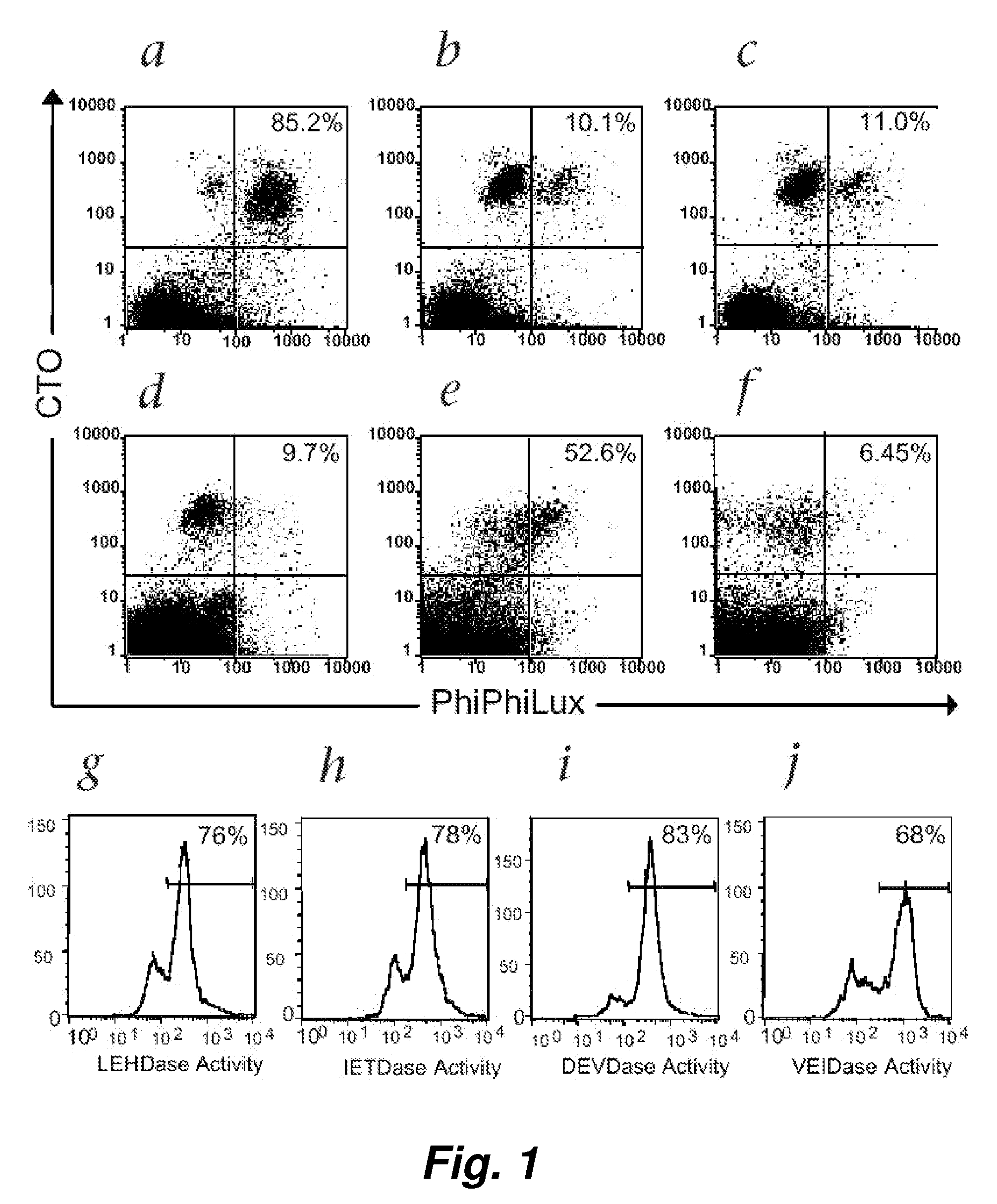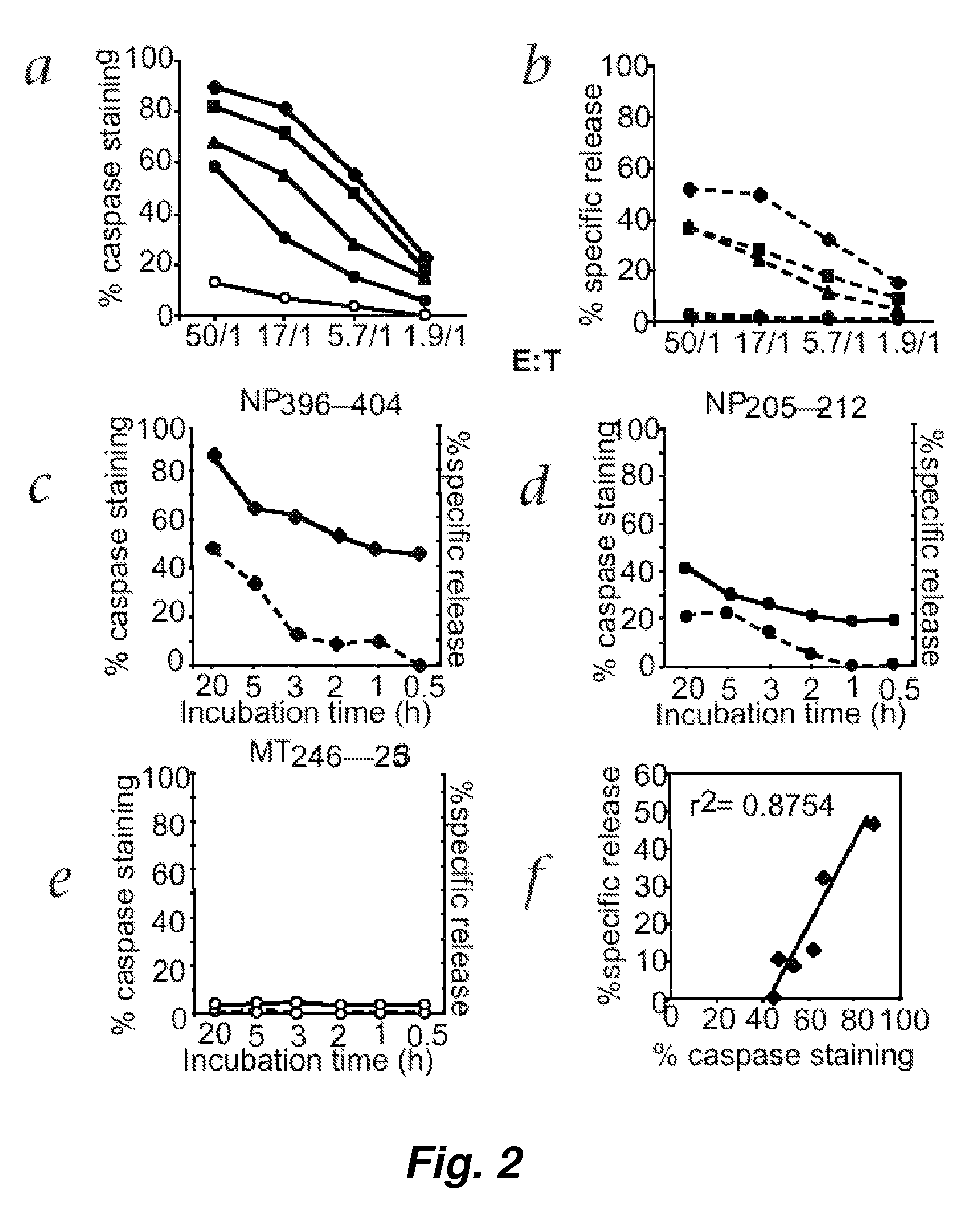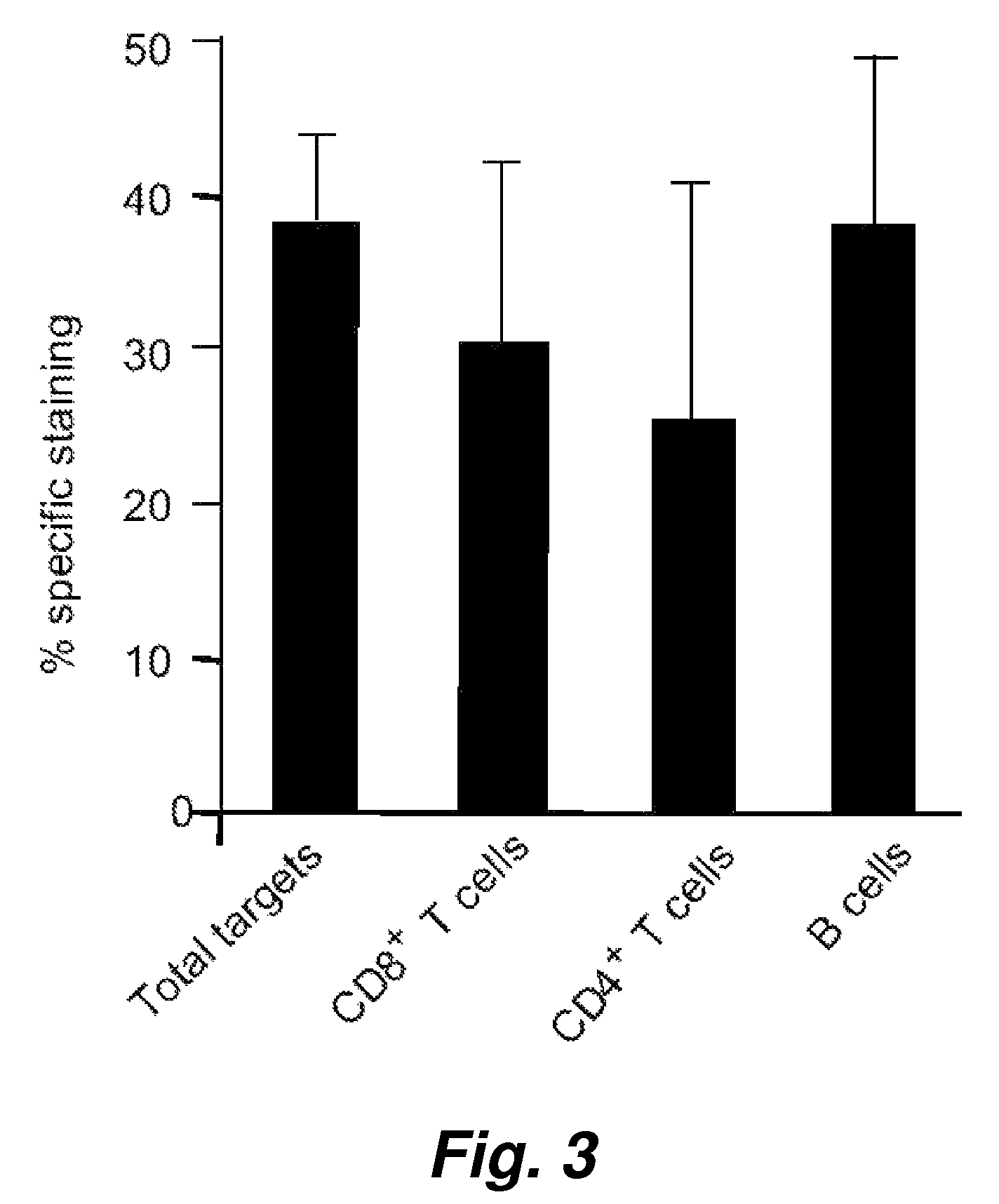Visualization and quantitation of cellular cytotoxicity using cell-permeable fluorogenic protease substrates and caspase activity indicator markers
a fluorogenic protease substrate and cytotoxicity technology, applied in the field of immunology, can solve the problems of large background signal, inability to study direct ctl killing of primary host target cells, and little information about the kinetic interaction of effectors and targets
- Summary
- Abstract
- Description
- Claims
- Application Information
AI Technical Summary
Benefits of technology
Problems solved by technology
Method used
Image
Examples
example 1
Visualization and Quantification of T Cell-Mediated Cytotoxicity Using Cell-Permeable Fluorogenic Caspase Substrates
[0100]Following T-cell receptor recognition of antigenic peptide-MHC class I complexes on the surface of target cells, cytotoxic effector cells (e.g., CTLs) induce target-cell apoptosis either through directed exocytosis of perforin and granzymes or through ligation of “death receptors” in the Fas / Fas ligand (FasL) pathway. An immediate event following both types of cytotoxic signaling is the activation of the caspase cascade within the target cells (Atkinson et al. (1998) J. Biol. Chem. 273: 21261-21266). We have used a novel class of cell-permeable fluorogenic caspase substrates to develop a fluorescence-based cellular cytotoxicity (FCC) assay that detects CTL-induced caspase activation within individual target cells (Packard et al. (1996) Proc. Natl. Acad. Sci. USA 93: 11640-11645; Komoriya et al. (2000) J. Exp. Med. 191: 1819-1828). These reagents are composed of t...
example 2
Cell Permeable Fluorogenic Caspase Substrates Show the Presence of Memory Cells where as the Tradition Chromium Release Assay Did not
[0122]Detection of memory CTL responses using chromium release assay generally requires a 5 to 6-day in vitro restimulation and the expansion of CTL precursors in culture. With the improved sensitivity of fluorescence cellular cytotoxicity (FCC) assays described herein, we believed that we would be able to detect a memory CTL response with limited or no in vitro restimulation.
[0123]To test this hypothesis, direct ex vivo memory CTL activity specific for NP396-404 was measured using both the fluorescence cellular cytotoxicity (FCC) and 51chromium release assays. Freshly prepared spleen cells obtained from LCMV-infected C57BL / 6 mice 32 days after initial LCMV infection were incubated at various E / T ratios with target EL4 cells for 5 hours. FIG. 5 shows that, surprisingly, the fluorescence cellular cytotoxicity (FCC) assay but not 51chromium release assay...
example 3
Cellular Cytotoxicity Assay Using Various Adherent and Suspension Cells as the Target Cells
[0124]In order to evaluate the broader applicability of the present invention, we have tested assay performance using both an adherent cells as well as additional suspension cells as the target cells. The effector cells in this experiment were human NK cells. The percentage killing (see Table 2) observed for just 1 hour of co-incubation of the effector cells with an effector to target cell ratio of 5 to 1 shows clearly that the cell-mediated cytotoxicity described herein works very well with these widely different cell types, i.e. the adherent human breast adenocarcinoma cell and human suspension cells (Jurkat and K562).
[0125]An alternative assay was also performed where the VEIDase substrate (VEID, SEQ ID NO:23) rather than DEVDase substrate (DEVD, SEQ ID NO:22) was used. It has been reported that this caspase 6 substrate with the VEID tetrapeptide amino acid sequence is also recognized by cy...
PUM
| Property | Measurement | Unit |
|---|---|---|
| molecular weight | aaaaa | aaaaa |
| molecular weight | aaaaa | aaaaa |
| molecular weight | aaaaa | aaaaa |
Abstract
Description
Claims
Application Information
 Login to View More
Login to View More - R&D
- Intellectual Property
- Life Sciences
- Materials
- Tech Scout
- Unparalleled Data Quality
- Higher Quality Content
- 60% Fewer Hallucinations
Browse by: Latest US Patents, China's latest patents, Technical Efficacy Thesaurus, Application Domain, Technology Topic, Popular Technical Reports.
© 2025 PatSnap. All rights reserved.Legal|Privacy policy|Modern Slavery Act Transparency Statement|Sitemap|About US| Contact US: help@patsnap.com



